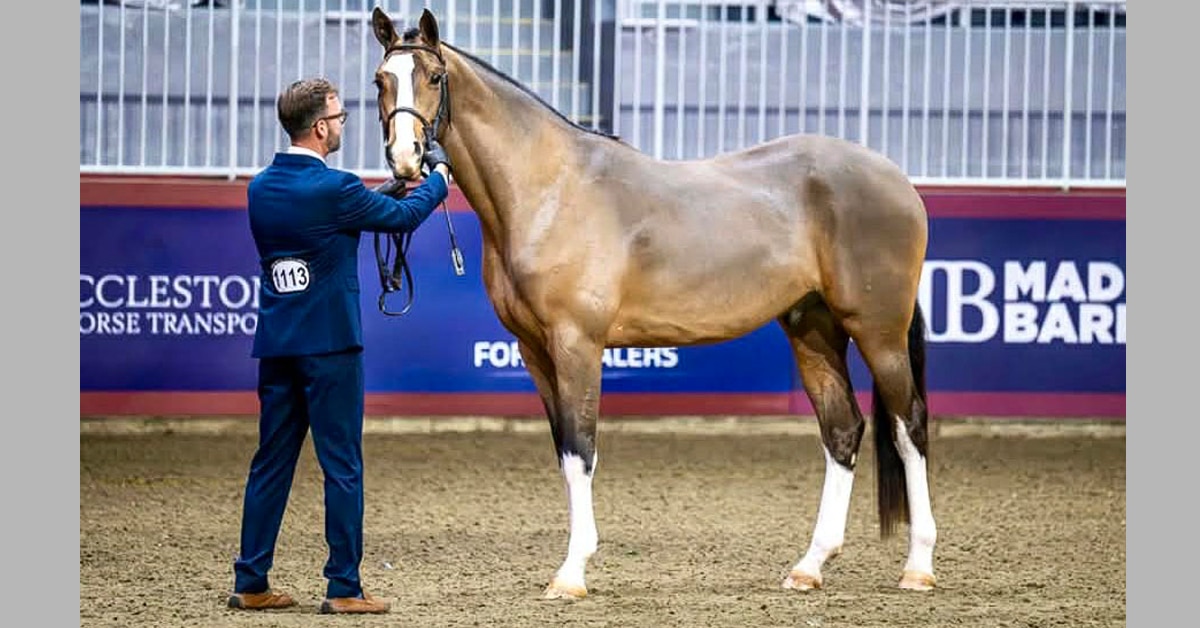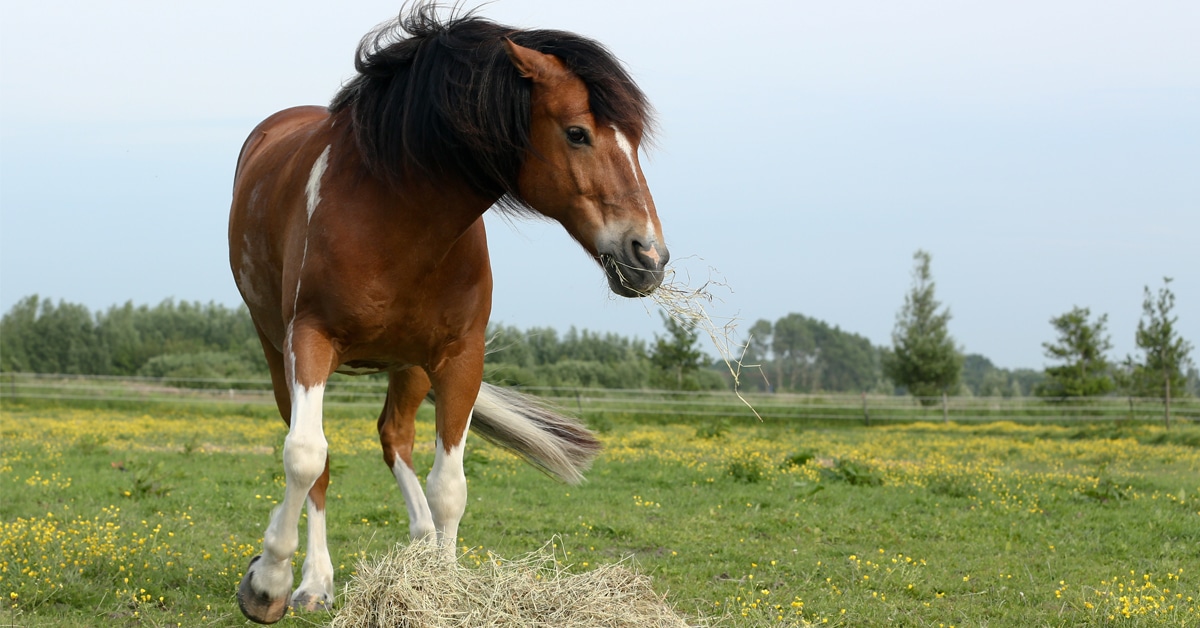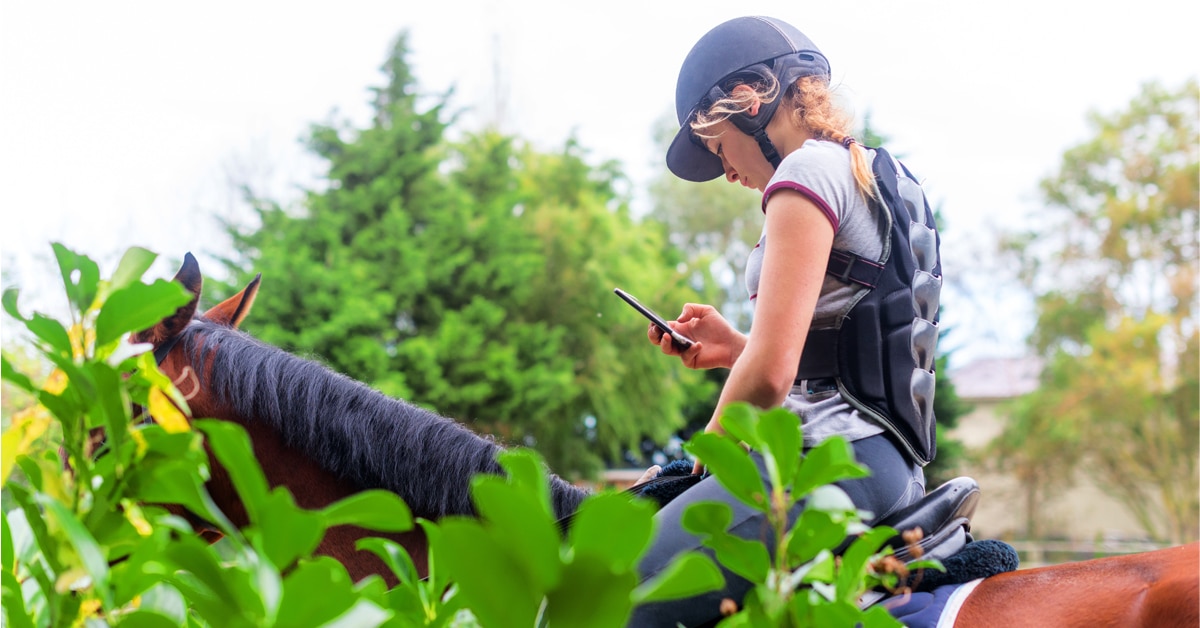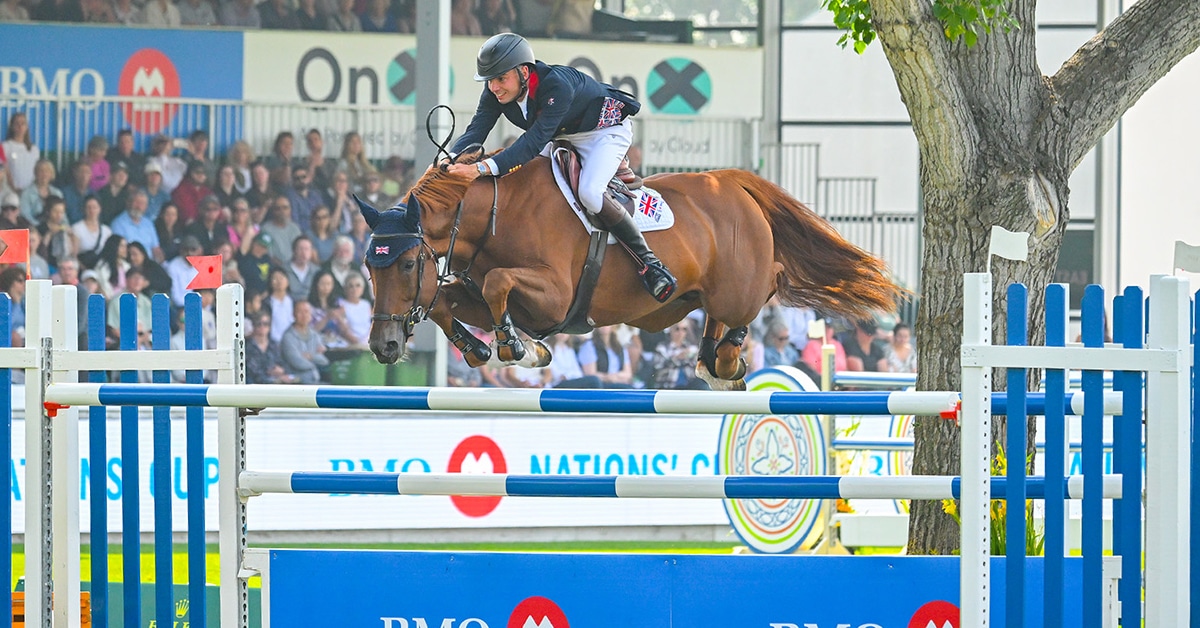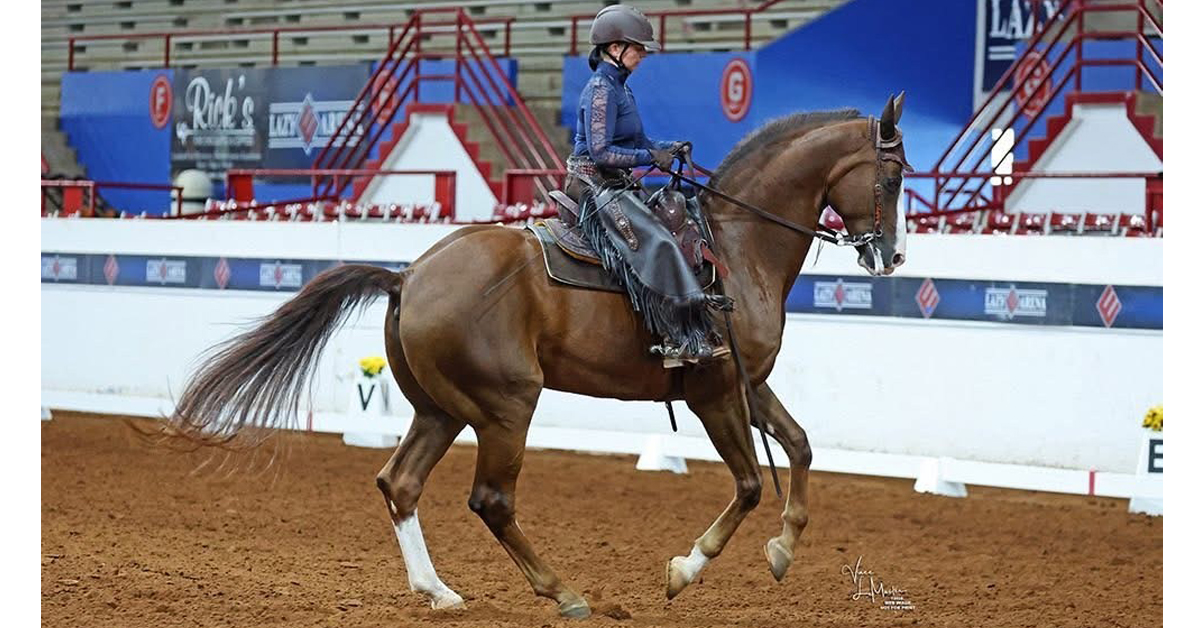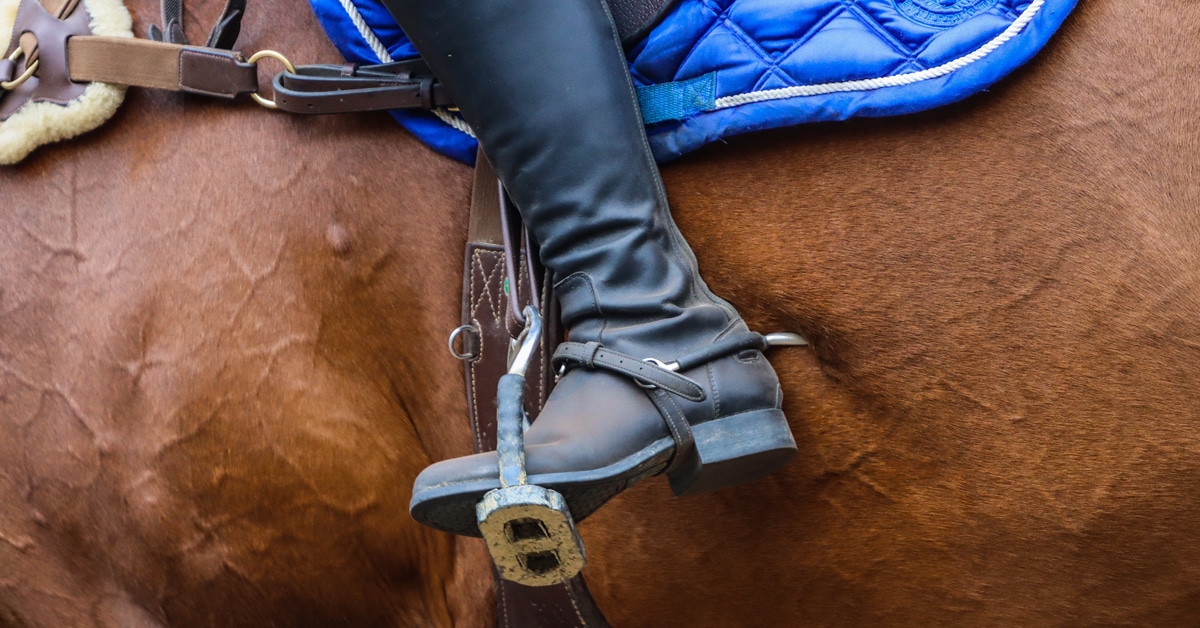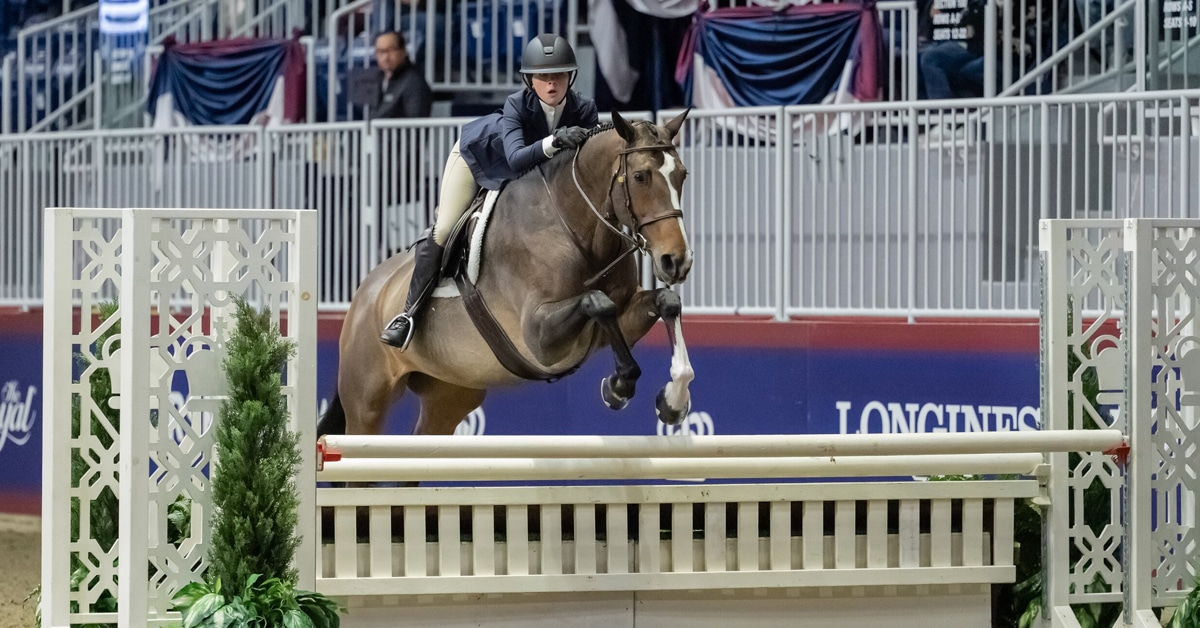You can see family and friends, but electric wire prevents you from touching them. When you call out you are punished and further isolated. If you make a friend, that person is permanently removed. As your insecurity increases, your case is discussed among experts to deal with your problematic “herdy” behaviour. Horses, like humans, are hard-wired to be social; separation elicits distress. This is normal behaviour – and it is adaptive.
For social animals living in a herd, survival is dependent upon sticking together. Horses that were vigilant about the location of their herdmates were less vulnerable to predators and more likely to pass on those “herdy” genes, and distress, to their offspring. The very behaviour we consider a pathology has been critical for horses’ survival and woven into their genetic fabric. The horse who arrives at a show and flies about in his stall, screaming for his friends that he can no longer see, is exhibiting normal behaviour; the horse who enters a show ring solo and jumps over 15 obstacles that under natural circumstances would be better to avoid, is not!
That said, horses that become distressed when separated from stablemates experience a considerable physical and mental toll that compromises welfare and training. Here, I will discuss the disconnect between the horse’s evolutionary adaptations and the environmental challenges he faces, and how we can best deal with this natural (albeit irritating) behaviour.
Understanding herdiness and distress as an ethological need
Dan Weary and animal welfare colleagues from the University of British Columbia looked at animal welfare from the integration of the environmental challenges an animal must currently meet, and their evolved adaptations to meet those challenges. For today’s sport horse, the adaptation of needing to stick together is superfluous and the horse is faced with environmental challenges for which he was not designed, such as living in isolated box stalls, working independently from herdmates, and having limited or no tactile contact with other horses. He suffers because his motivational drive to form social bonds remains strong even though his opportunity to do so has been thwarted. He suffers further because he no longer reaps the payoff associated with spending time with good friends (lowered physiological stress responses, increased endorphin levels, etc.)
Ethologists (scientists who study animal behaviour from an evolutionary perspective) note that a behaviour becomes an “ethological need” when it is performed by all individuals of that species, is self-rewarding, provokes chronic stress and the potential development of abnormal behaviour when denied, and is performed regardless of context, even when the physiological needs that precipitate the behaviour have been met (VanDierendonck, 2012). Many of our current sport horse management practices, such as individual housing, thwart horses’ ethological need to be social. Traditionally, herdiness is managed by further separation. In the next section, I discuss how isolation works against fostering the security a horse needs to manage his separation distress. To reduce unwanted herdy behaviours we need to provide more, rather than fewer, opportunities for horses to be social, to touch one another, and to make friends.
How do we manage herdiness?
1. Let them touch
Although most sport horse stables allow visual contact among horses, tactile contact is rare. Recently, researchers suggest that allogrooming (where two horses engage in mutual, synchronous nibbling primarily around the withers and neck) may be an ethological need, and that horses who are not able to do so are at risk for compromised welfare. Allogrooming has been associated with the physiological effects of stress reduction, including lowered heart rate, blood pressure and cortisol levels, increased immunity, and a rise in beta endorphins (Feh and de Mazières’, 1993; Haverbeke et al. 2002), and thus may make horses less vulnerable to separation distress. Providing opportunities for allogrooming may be accomplished even if horses are individually housed with modest reconfigurations of stalls and paddocks. Removing electric wire designed to discourage the tactile contact so integral to a horse’s psychological survival would be a progressive first step.
2. Get out the curry comb
Andrew McLean, an equine researcher from Australia, suggests that the horse’s fundamental need for security through social cohesion may in part be fulfilled by a human handler. Vigorous wither grooming from a human appears to have similar stress reduction effects for horses as grooming by another horse (Feh & de Mazières’, 1993). McLean proposes that it may also have similar bonding properties. As McLean notes, “tactile contact is an antidote for insecurity.”
Wither scratching can also be incorporated while under saddle as a more effective reinforcer than patting the horse’s neck. There is no evidence to suggest that horses interpret a pat as either a primary reinforcer (i.e. something that is inherently rewarding because it fulfills a biological need), or that it enhances an affiliative bond between horse and human. Wither scratching, however, since it is inherently reinforcing, allows the horse make an association between the behaviour we like and the pleasant reward of the scratch. And, since the wither scratch seems to have properties for cementing relationships, we create a stronger bond with our horse in the process. McLean proposes that “paying greater attention to our horses’ fundamental affective need for touch might help facilitate a stronger attachment between horse and human.”
3. Let them form friendships
An equally critical ethological need for calming distress is the horse’s propensity to form specific alliances with particular others, evolved to enhance the social stability of the herd. Trainers and owners generally discourage this bonding, believing that it will encourage herdy behaviour when friends become inseparable. However, if horses are systematically trained to tolerate temporary separations, allowing horses to create the social alliances for which they were evolutionarily designed may well diminish, rather than enhance, separation distress (see sidebar on page 54).
4. If they are young, let them grow up
Horses do appear to become less dependent on herdmates over time. Lansade and colleagues (2008) looked at young horses in a number of separation scenarios, and found that horses showed the most distress at eight months of age, less at 1.5 years, and the least at 2.5 years. The authors suggest that horses may be hard-wired to become more independent as they mature. Younger horses are more vulnerable to predators, and dependence on the herd is particularly critical for their survival. Also, horses’ stress may have dissipated as the separation episodes became increasing familiar, suggesting that practice, and repeated tolerable exposure to separation, helps.
5. Respect individual differences
Lansade also found that although horses overall tolerated separation more easily as they matured, the horses who did the most neighing and agitating at eight months continued to be the noisiest and most agitated at 2.5 years. The authors comment that this stability over time and situation suggests an underlying personality trait. In spite of training and management modifications, some horses may simply be able to handle current isolation practices better than others.
6. Let them live in a herd
This radical solution (certainly rare in show horse management) will undoubtedly cause you to roll your eyes, and say “As if!” Placate me by reading on a little further. Equine researchers are suggesting that the consistent, predictable, tactile contact that horses need may be most easily provided by large heterogeneous group housing. Horses adapt quite quickly and readily to this arrangement and, given sufficient space (a large enough field that a horse is able to avoid an aggressor), injuries are rare (VanDierendonck, 2013; Ladwig, 2013). Danish researcher Jan Ladewig maintains that in heterogeneous groups, horses learn multiple aspects of social communication which diminishes aggression. Large groups are more successful, because horses can more readily find a partner who fits, and more easily avoid those that do not.
Sabrina Briefer Freymond (2012) and her group from the Swiss National Stud successfully pastured five to eight elite (and expensive) sport horse breeding stallions together during their non-breeding season. As a result of their success, they continue to pasture a “bachelor band” every year. Freymond noted that stallions, rather than fighting, engaged in ritualistic behaviours (abbreviated, non-contact behaviours that substitute for actual aggression) to establish social order, and that these behaviours subsided in each subsequent year of bachelor band living. To reduce competition, stallions were housed in large pastures away from mares, had multiple feeding stations, met in adjacent stalls before group turnout, and hind shoes were removed before the initial encounter. She found that antagonistic behaviours subsided quickly, there were no injuries, welfare was greatly enhanced, and management costs were significantly reduced.
Conclusion
Under natural living conditions, the concept of herdiness is meaningless. Horses live in stable social bands or harems that are relatively permanent throughout their lives. They are a herd, and they are motivated to remain as such. There is no pathology in this. It is only when horses try to adapt to the environmental challenges that we have imposed that these evolved behaviours become problematic. Equine scientists are currently using the term “gregariousness” to describe a horse’s desire to stay connected to herdmates. This reframing encourages us to shift our thinking about herdiness as a character flaw to something natural, neutral, and even positive.
In spite of 6,000 years of domestication, our horses’ psychological and ethological needs have not fundamentally changed. What has changed is the environmental demands we have placed on them. Thus we should strive to create a greater synchronicity between the environmental challenges that our horses face and the evolutionary adaptations they have to cope with them.
The Latest
